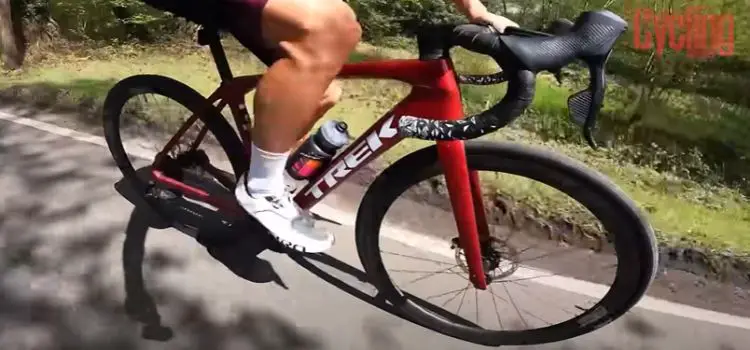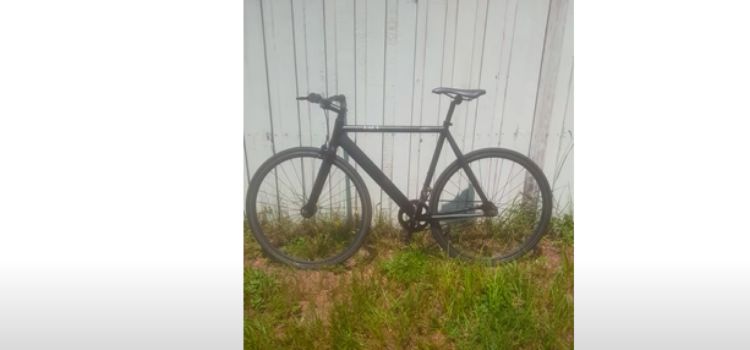Can You Ride a Mini Bike on the Road?
As an Amazon Associate I earn from qualifying purchases.
Mini bikes, with their compact size and thrilling rides, have gained popularity among enthusiasts. However, a common question looms over riders: Can you ride a mini bike on the road?
The answer is nuanced and varies based on the legality and safety standards set by each state.
In this comprehensive guide, we’ll delve into the intricacies of mini bike street legality, the possibility of making them roadworthy, state regulations, and where you can legally unleash the thrill of your mini bike.

Street Legality of Mini Bikes
The street legality of mini bikes is a complex and nuanced topic that varies based on regional regulations and safety standards. In general, many mini bikes are not considered street legal by default due to their size, design, and lack of essential safety features. Here are key factors to consider regarding the street legality of mini bikes:
1. Lack of Safety Equipment
- Mini bikes often lack the standard safety equipment required for street legality. This includes headlights, taillights, turn signals, rearview mirrors, and license plates.
- Due to their small size, mini bikes are not easily visible on the road, increasing the risk of accidents.
2. Registration and Documentation
- Mini bikes are not registered for road use, which is a crucial requirement for street legality. Proper registration ensures that the vehicle meets specific safety and emissions standards.
- Riding an unregistered mini bike on public roads may result in legal consequences, including fines or penalties.
3. Visibility and Safety Concerns
- The compact nature of mini bikes raises concerns about visibility on busy roads. Other motorists may have difficulty spotting these smaller vehicles, leading to potential safety hazards.
- Local laws and regulations often prioritize the safety of all road users, and mini bikes may not meet these safety standards by default.
4. Modification for Street Legality
- While mini bikes are not street legal in their original state, enthusiasts can modify them to meet road safety standards. This involves adding the necessary safety equipment mentioned earlier.
- The modification process may include installing headlights, taillights, turn signals, mirrors, and obtaining a license plate to comply with local regulations.
5. Legal Consequences
- Riding a non-street legal mini bike on public roads can result in legal consequences, including fines, impoundment of the vehicle, or even suspension of the rider’s license.
- Understanding and adhering to local laws is crucial to avoiding legal issues related to the street use of mini bikes.
6. State-Specific Regulations
- Street legality regulations for mini bikes vary significantly from state to state. Some states may have more lenient rules, allowing for easier modification and street use, while others may have strict guidelines.
The street legality of mini bikes depends on their compliance with safety standards and local regulations. While many mini bikes are not inherently street legal, enthusiasts can navigate the legal landscape by modifying their bikes to meet safety requirements. It’s essential to research and understand the specific regulations in your state to ensure a safe and legally compliant riding experience.
Making Mini Bikes Street Legal
Making mini bikes street legal involves a series of modifications and adherence to specific safety and regulatory standards. While mini bikes may not meet the requirements for road use by default, enthusiasts can take steps to ensure their vehicles comply with local laws. Here’s a guide on how to make mini bikes street legal:
1. Add Safety Equipment
- Headlights: Install functioning headlights to ensure visibility during low-light conditions.
- Taillights: Add taillights to make the mini bike visible to vehicles approaching from behind.
- Turn Signals: Incorporate turn signals to indicate changes in direction, enhancing safety on the road.
- Rearview Mirrors: Install rearview mirrors on one or both sides to provide the rider with a clear view of the surroundings.
2. License Plate
- Attach a properly sized and legible license plate to the mini bike. The license plate serves as a crucial identifier and is a requirement for road legality.
3. Tires and Brakes
- Ensure that the tires and brakes meet the safety standards specified by local regulations. This may involve checking the condition of the tires and ensuring that the braking system is in optimal working condition.
4. Emissions Standards
- In some regions, mini bikes must comply with emissions standards. Check local regulations to determine whether emissions testing or compliance are necessary for street legality.
5. Registration, Insurance, and Inspection
- Register the mini bike with the local Department of Motor Vehicles (DMV) or equivalent agency. This involves providing the necessary documentation and paying any required fees.
- Obtain the appropriate insurance coverage for the minibike. Insurance is often a prerequisite for registration and provides financial protection in case of an accident.
- Undergo a thorough inspection to verify the minibike’s roadworthiness. This may include checks on safety equipment, emissions compliance, and overall mechanical condition.
6. Follow Local Laws
- Familiarize yourself with and adhere to local laws and regulations governing the use of mini bikes on public roads. These laws may vary from state to state, so it’s essential to stay informed about specific requirements.
7. Consult with Authorities
- Reach out to local authorities or the DMV to clarify any uncertainties regarding the modification process or specific requirements for making mini bikes street legal.
8. Stay Informed about Changes
- Keep abreast of any changes in regulations or requirements that may impact the street legality of mini bikes. Regulations can evolve, and staying informed ensures ongoing compliance.
By following these steps and making the necessary modifications, minibike enthusiasts can transform their vehicles into street-legal machines. It’s crucial to approach the process systematically, ensuring that the mini bike meets all safety and regulatory standards mandated by local authorities. Always prioritize safety and legal compliance to enjoy the thrill of riding a minibike on public roads responsibly.
State Regulations
State regulations play a pivotal role in determining the street legality of mini bikes. These regulations can vary significantly from one state to another, impacting the modifications needed to make a mini bike compliant with road use standards. Here’s a comprehensive overview of state regulations regarding mini bikes in different parts of the United States:
Alabama:
- Not allowed on roads without inspection, titling, and registration.
Alaska:
- All vehicles are allowed with modifications, but all-terrain vehicles (APVs) cannot exceed 45 MPH. It requires a license, title, insurance, and street legal safety equipment.
Arizona:
- Not allowed without meeting street legal safety requirements for both motor-driven cycles and regular motorcycles.
Arkansas:
- Not allowed unless the bike has street legal safety equipment; applies to all sizes.
California:
- Not allowed on most roads unless modified to meet motorcycle requirements.
Colorado:
- Not allowed for bikes 50 cc or more unless modified to meet motorcycle requirements.
Connecticut:
- Classified as the same as an ATV or dirt bike, they are not allowed on roads.
Delaware:
- Not allowed unless modified to meet motorcycle requirements.
Florida:
- Not allowed for off-highway motorcycles unless classified the same as an ATV.
Georgia:
- Mini bikes must meet equivalent requirements to those of traditional motorcycles for road use.
Hawaii:
- Must meet the same requirements as an ATV; not allowed on roads.
Idaho:
- Allowed on county, city, or highway district roads with a speed limit of 45 MPH or less. Classified as a motorbike, it requires an off-highway vehicle (OHV) sticker and vehicle registration plates.
Illinois:
- Classified as off-highway motorcycles, it is unlawful to drive on roads.
Indiana:
- Classified as an off-road vehicle, not allowed on highways or roads.
Iowa:
- Mini bikes must meet equivalent requirements to those of traditional motorcycles for road use.
Kansas:
- Mini bikes must meet equivalent requirements to those of traditional motorcycles for road use.
Kentucky:
- Classified as the same as an ATV, it is not allowed on any highway or road for public use.
Louisiana:
- Mini bikes must meet equivalent requirements to those of traditional motorcycles for road use.
Maine:
- Classified as the same as an ATV, it is not allowed on any highway or road for public use.
Maryland:
- Considered an off-highway recreational vehicle, it is not permitted for road use.
Massachusetts:
- Mini bikes are classified as recreation vehicles or off-highway vehicles and are not permitted on roads.
Michigan:
- Must meet the same requirements as an off-road vehicle (ORV); requirements vary by county.
Minnesota:
- Classified as off-highway motorcycles, they must meet safety equipment requirements.
Mississippi:
- Considered dirt bikes for off-road use, riders can acquire a license for road use.
Missouri:
- Not permitted for road use, classified as off-road vehicles.
Montana:
- Mini bikes must meet equivalent requirements to those of traditional motorcycles for road use.
Nebraska:
- Two-wheeled devices are considered and must comply with street legal equipment requirements.
Nevada:
- Classified as off-highway vehicles, they must meet safety equipment requirements.
New Hampshire:
- Classified as off-highway recreational vehicles, they must meet safety equipment requirements.
New Jersey:
- Must be inspected and approved for road use and meet safety and emissions standards.
New Mexico:
- Considered off-highway vehicles need insurance, registration, and safety equipment for road use.
New York:
- Classified as the same as an ATV, it is not allowed on any highway or road for public use.
North Carolina:
- Mini bikes must meet equivalent requirements to those of traditional motorcycles for road use.
North Dakota:
- Mini bikes must meet equivalent requirements to those of traditional motorcycles for road use.
Ohio:
- Mini bikes must meet equivalent requirements to those of traditional motorcycles for road use.
Oklahoma:
- Mini bikes must adhere to identical requirements as traditional motorcycles or motor-driven cycles for road usage.
Oregon:
- Mini bikes are solely permitted on two-lane gravel roads that are open to ATVs.
Pennsylvania:
- Mini bikes must meet equivalent requirements to those of traditional motorcycles for road use.
Rhode Island:
- Only allowed to make direct crossings on roads during daylight.
South Carolina:
- Mini bikes must adhere to identical requirements as traditional motorcycles or motor-driven cycles for road usage.
South Dakota:
- Mini bikes must adhere to identical requirements as traditional motorcycles or motor-driven cycles for road usage.
Tennessee:
- Mini bikes are exclusively permitted on unpaved roads; however, they can attain street legality with the addition of safety equipment.
Texas:
- Must have street legal equipment to ride on roads with a speed limit of 35 miles per hour or less.
Utah:
- Not allowed; considered off-highway vehicles.
Vermont:
- Classified as the same as an ATV, it must meet street legal motorcycle requirements.
Virginia:
- Only allowed on Southwest Regional Recreation Authority-approved roads of 35 MPH or less.
Washington:
- Considered off-road vehicles, only allowed on non-highway roads in designated areas.
West Virginia:
- Classified the same as an off-highway vehicle (OHV), it must meet street legal motorcycle requirements.
Wisconsin:
- Must meet the same requirements as a traditional motorcycle or motor-driven cycle for road use.
Navigating the varied state regulations is crucial for minibike enthusiasts to ensure compliance and legal street use. Always check with local authorities and stay informed about any changes in regulations to enjoy the thrill of riding responsibly.
Where Can You Use a Mini Bike?
While the street legality of mini bikes may be limited, there are legal and enjoyable places where enthusiasts can ride these compact machines. Here are two primary locations where you can use a mini bike:
1. Private Property
- Permission from the Landowner: One of the best and most accessible places to ride a minibike is on private property. However, it’s crucial to obtain explicit permission from the landowner before engaging in any riding activities. This might include large yards, fields, or designated tracks on private land.
- Respectful Riding: When using private property, riders should be respectful of the landowner’s wishes and any specific rules or conditions they may have. This ensures a positive relationship with the property owner and minimizes the risk of trespassing issues.
2. Off-Road Trails
- Rugged and Challenging Terrain: Mini bike enthusiasts looking for more adventurous rides can explore off-road trails. These trails are typically designed for various off-road vehicles and offer rugged and challenging terrain for those who enjoy testing the capabilities of their mini bikes.
- Adherence to Rules and Guidelines: Not all off-road trails may be open to mini bikes, so it’s essential to check and adhere to any posted rules or guidelines. Following trail-specific regulations ensures a safe and enjoyable experience for riders and helps maintain the integrity of the trail system.
Considerations for Riding
- Safety First: Regardless of the location, safety should always be a top priority. Riders should wear appropriate protective gear, including helmets, gloves, and knee pads, to minimize the risk of injury.
- Local Laws and Regulations: Before riding a minibike in any location, it’s crucial to be aware of and adhere to local laws and regulations. This includes noise restrictions, speed limits, and any specific rules governing the use of mini bikes in the chosen area.
- Environmental Responsibility: Whether on private property or off-road trails, riders should be environmentally conscious. Avoid disturbing wildlife, stay on designated trails, and follow “leave no trace” principles to minimize the impact on the environment.
Licensing
Licensing requirements for mini bikes vary depending on their intended use and the regulations of the jurisdiction in which they are operated. Here’s a breakdown of licensing considerations for minibike riders:
1. Off-Road Use
- In many regions, mini bikes are considered off-road vehicles when used on private property or designated off-road trails.
- Licensing requirements for off-road use are typically minimal or nonexistent. Riders may not need a specific license to operate a minibike in these settings.
- However, even for off-road use, it’s essential for riders to follow safety guidelines and wear appropriate protective gear.
2. On-Road Use
- If a mini bike is modified to meet street-legal requirements and is intended for use on public roads, licensing requirements become more stringent.
- In most jurisdictions, riders will need a valid driver’s license to operate a street-legal minibike on public roads.
- The specific type of license required may vary. In some places, a standard driver’s license may suffice, while others may require a motorcycle endorsement.
- Riders should check with their local Department of Motor Vehicles (DMV) or equivalent authority to determine the licensing requirements for operating a mini bike on public roads.
3. Vehicle Registration
- In addition to licensing, street-legal mini bikes need to be registered with the DMV or relevant authority.
- Vehicle registration typically involves providing proof of ownership, paying registration fees, and obtaining a license plate for the mini bike.
- Registration ensures that the mini bike meets certain safety and emissions standards and can be legally operated on public roads.
4. Insurance
- Street-legal mini bikes may also be subject to insurance requirements similar to those for motorcycles or other motor vehicles.
- Obtaining insurance coverage helps protect riders financially in case of accidents or liability claims while operating the minibike on public roads.
5. Compliance with Local Laws
- It’s important for minibike riders to familiarize themselves with the specific licensing, registration, and insurance requirements in their jurisdiction.
- Local laws and regulations governing the operation of mini bikes on public roads may vary, so riders should always ensure compliance to avoid legal issues.
The licensing requirements for mini bike riders depend on factors such as whether the bike is used for off-road or on-road purposes and the regulations of the jurisdiction in which it is operated. Riders should be aware of and adhere to all applicable laws and requirements to ensure the safe and legal operation of their mini bikes.
Conclusion
In conclusion, the street legality, licensing, and usage of mini bikes involve various considerations and responsibilities for enthusiasts. Here are the key points to take away:
Street Legality:
- Mini bikes are generally not street legal by default due to their lack of essential safety features and registration.
- Modifications such as adding headlights, taillights, turn signals, and obtaining proper registration can make mini bikes compliant with street legal requirements.
Usage Locations:
- Mini bikes can be legally enjoyed on private property with the landowner’s permission and on designated off-road trails.
- Riders should always respect the rules and guidelines of the riding location and prioritize safety at all times.
Licensing and Registration:
- Licensing requirements vary depending on whether the mini bike is used for off-road or on-road purposes.
- Street-legal mini bikes typically require a valid driver’s license, vehicle registration, and possibly insurance coverage.
Compliance and Responsibility:
- It’s crucial for mini bike riders to understand and adhere to local laws and regulations governing the operation of mini bikes.
- Compliance with safety standards and environmental considerations is essential to ensure the safety of riders and others and to minimize the impact on the environment.
In essence, navigating the world of mini bikes involves a balance of excitement and responsibility. By understanding the legal landscape, adhering to regulations, and prioritizing safety, enthusiasts can enjoy the thrill of mini biking while ensuring a positive and lawful experience for themselves and others.
Amazon and the Amazon logo are trademarks of Amazon.com, Inc, or its affiliates.






